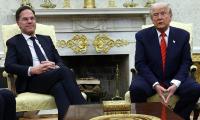The State Bank of Pakistan (SBP) scrambled to deflect a possible inflation and current account deficit crisis by bumping up the policy rate by 250 basis points to 12.25 percent in an emergency meeting, while dropping clues of another early huddle, if necessary. Though inflationary pressures are mounting, the SBP has taken the drastic measure primarily to limit current account deficit and stem dollar outflows. The SBP acknowledged the significant uncertainty around the outlook for international commodity prices and global financial conditions, which had been exacerbated by the Russia-Ukraine conflict. The central bank is prepared to meet earlier than the next scheduled Monetary Policy Committee meeting in late April, if necessary, to take any needed timely and calibrated action to safeguard external and price stability.
Since the last MPC meeting, the outlook for inflation has deteriorated and risks to external stability have risen. The economy is back in the stabilization mode owing to wobbly and unsustainable macroeconomic fundamentals. The debilitated growth will definitely worsen the unemployment crisis, sending more and people under the poverty threshold. We will now have to forget about accelerating economic growth and creating job opportunities. This also puts the country at the increased risk of a balance-of-payments crisis amid a fluid political situation. Moreover, our already frail economy is growing more and more anaemic with the unabated bleeding of foreign exchange reserves.
The SBP’s liquid dollar assets massively evaporated to $11.3 billion on April 1, 2022. Reserves plunged by almost $5 billion in less than a month. Amid increasing external vulnerability, the SBP used two available tools – including an exchange rate anchor by allowing adjustment of the exchange rate, and the rupee witnessed a steep fall against dollar – slumping to over Rs189 versus the dollar in the interbank market, while it crossed Rs195 in the open market. A breakdown of existing SBP-held forex reserves show they were composed of deposits of friendly countries as Saudi Arabia had provided $3 billion, China $4 billion and UAE $2 billion, demonstrating increased vulnerability on the external front.
Another worrisome development is a yawning current account deficit, which stood at $12.3 billion in the first eight months (July-Feb) period and shrank to $545 million for February 2022 from $2.3 billion for January 2022. However, the trade deficit widened for March 2022. Imports stood at $6.2 billion in March 2022 versus $5.9 billion in February 2022. Trade deficit has widened to 12 percent to $3.4 billion. If the trade deficit for March has widened to around $1 billion, then alarm bells must have rung at the Ministry of Finance and the central bank. The IMF has clearly indicated it will engage with the new government. The first and foremost task for the new setup, if any, will be to get the IMF back on the negotiation table.
where New Delhi’s draconian policies have systematically dismantled the political and social fabric of region
This past Sunday, at least three soldiers were martyred and four others sustained serious injuries
Karachi has seen an even steeper jump, from Rs145 to Rs180 per kilogram
Militants blew up track, and seized control of Jaffar Express; train was carrying more than 400 passengers
While police insist they have zero-tolerance policy toward vigilante justice, their inaction speaks otherwise
President emphasises need to rebuild consensus to tackle extremism and militancy that supports such violence







